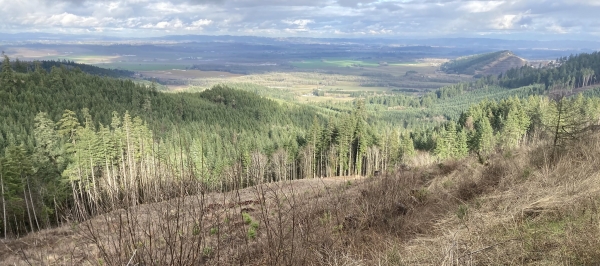Rising wildfire risk in the Pacific Northwest combined with notoriously volatile timber pricing may lower forestland values by as much as 50% and persuade plantation owners to harvest trees much earlier than planned, a new analysis of Douglas-fir forests shows.
Rising wildfire risk in the Pacific Northwest combined with notoriously volatile timber pricing may lower forestland values by as much as 50% and persuade plantation owners to harvest trees much earlier than planned, a new analysis of Douglas-fir forests shows.
Under the worst-case scenarios, modeling by researchers at Oregon State University suggests harvesting trees at 24 years would make the most economic sense. Absent wildfire risk, the optimal age would be 65 years.
Generally, private landowners harvest between those two ages, but it’s not a surprise for the optimal rotation age to go down in these scenarios, the scientists say.
Read more at: Oregon State University
Douglas-fir forest. (Photo Credit: Oregon State University)




